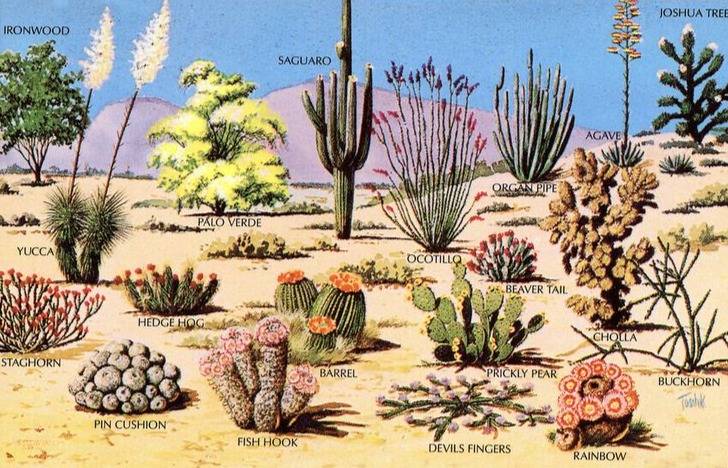
Picture it. You’re in the desert with no food, no water, and no idea where you are. You’re lost. And you are almost definitely going to die. Yuck. But here’s good news: you’ve read POSSESSED magazine’s guide to getting high in the desert, so at the very least *you can have fun tripping balls with your spirit animal before taking your final parched breath.
Believe it or not, the sandy wilderness is loaded with mescaline-rich cacti for you to gobble down in the noon-day sun, but you gotta know what to look for. Before we get into that, though, please note that this is by no means a definitive guide. It’s just what we know from personal experience. That’s right. We ate all this prickly green shit. So, pull on your trial shoes and grab a knife and fork—we’re having psychedelic cactus for lunch.
*POSSESSED magazine in no way advocates the ingestion of any of these or any psychedelic plants by anybody unless they think they can get away with it, both legally and psychologically.
Illustrations by Elizabeth England
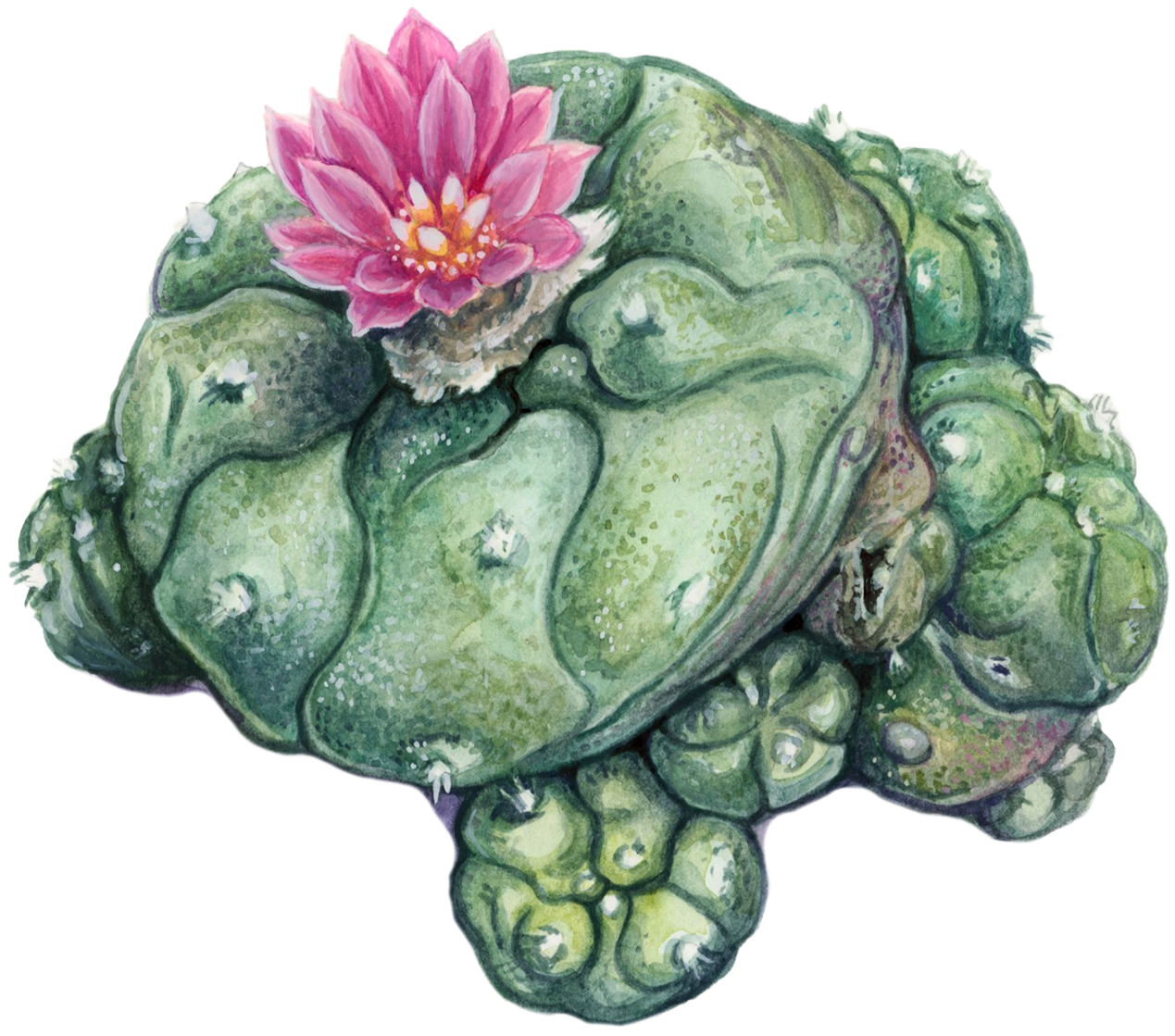
Peyote:
Lophophora Williamsii
Peyote is easily the best-known psychedelic cacti. Everyone from Jim Morrison to Aldous Huxley to my cousin, Simon, has experimented with it and been profoundly moved in one way or another (in Simon’s case, he was moved to take his clothes off on the front lawn).
Peyote is the smallest yet the most potent psychedelic cacti and pops up in two to five-inch diameter button-like bulbs across Mexico and the southwestern United States. Typically, Peyote is dried and eaten (the dosage ranging from six to twelve ‘buttons’), and the trip starts to come on anywhere from thirty minutes to an hour after ingestion, reaching full-tilt what-the-fuck-is-happening? at around the two-hour mark, depending on the potency of the dose and the physiology of the person taking it.
The peak effects of Peyote are similar to LSD (only different) and include euphoria, disorientation, anxiety, ataxia (loss of motor skills—for example, you might not be able to walk for a while), nystagmus (your eyes start doing whatever the hell they want), depersonalization (you don’t know who or even if you are anymore), and vivid visual hallucinations (is that grandma? I thought she was dead).
For 5000 years, Peyote was used by Native Americans in religious ceremonies, but the white man put a stop to that because he sucks. In 1993, however, the Religious Freedom Restoration Act came along, and now Peyote can be consumed once again by Native Americans as The Great Spirit intended.

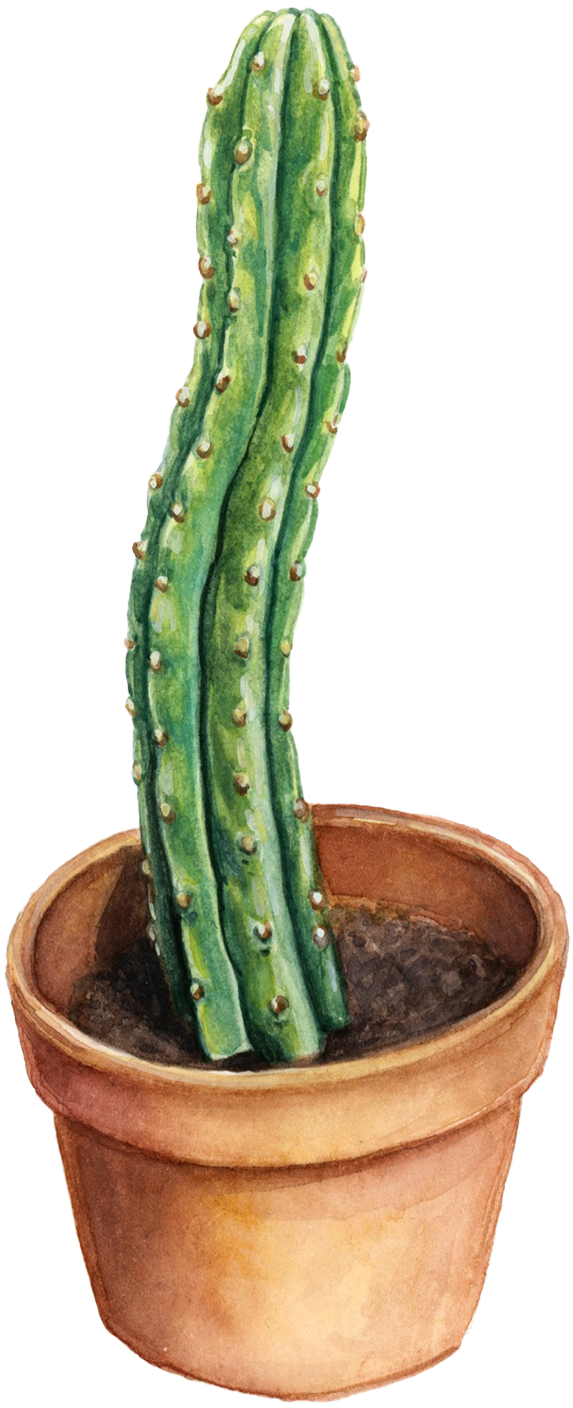

San Pedro:
Echinopsis Pachanoi
San Pedro is a powerful entheogen that grows literally everywhere. You’ve probably got some in a pot on your balcony now (go take a look). Because it’s so ubiquitous, San Pedro is considered a weed, but like that other weed we all know and love, San Pedro can do very interesting things to your brain.
I have a scientist friend who, when the moon is full, will reduce a few feet of San Pedro to an unpalatable, sticky, black paste and enjoy an evening of mind-blowing visions. ‘I can’t properly explain it,’ he once told me after one of his nocturnal adventures, ‘but there’s something beneath the surface of our everyday reality, and it’s right under our noses—we just can’t see it, man.’ Groovy, no?
San Pedro can also be consumed raw; however, you’ll need to peel and eat a piece as long as your forearm. When identifying San Pedro, you should look for a tall, columnar (column-like) bluish-green plant with six to eight shallow ribs, fuzzy white areolas (the bit where the spines—which are yellow in this case—prickle from), and huge white flowers that bloom vertically from said areolas.
Unlike the rollercoaster ride of Peyote, a San Pedro experience can take three to four hours to come on and is reportedly quite chill and euphoric with the occasional mystical vision and/or emotional breakthrough. Also worth noting, a San Pedro trip can last anywhere from ten to fourteen hours. It’s illegal to cultivate San Pedro for its mescaline content, and the San Pedro you might buy at the local nursery will have likely been bred to yield little to no mescaline at all. Your best bet is to find it in the wild or keep your eye out for the guy selling succulents at your Saturday market. You can’t miss him; he looks much happier than all the other vendors.
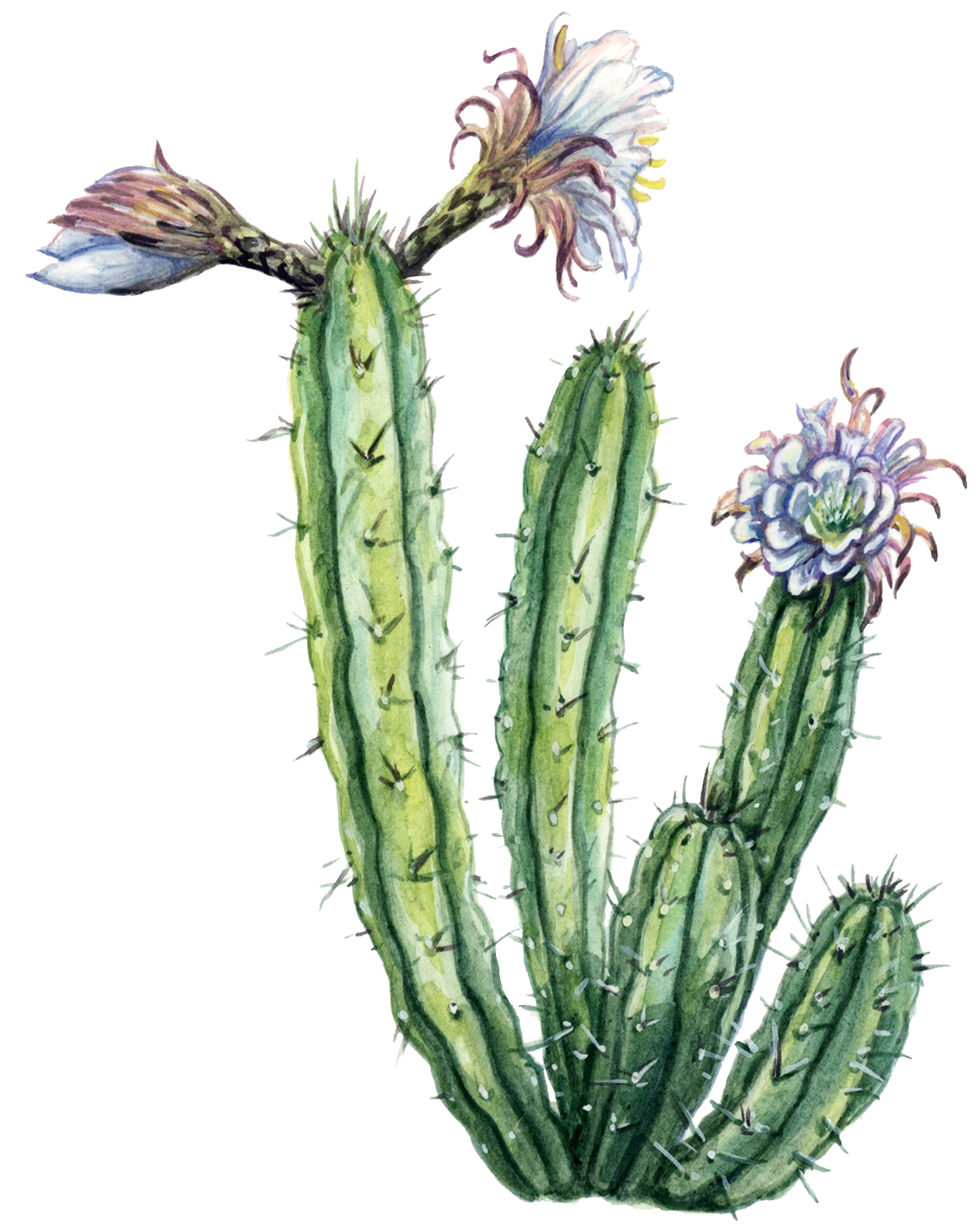
Bolivian Torch:
Echinopsis Lageniformis
Of all the columnar psychedelic cacti (of which there are many), Bolivian Torch is the one that will most consistently leave you naked on your front lawn. However, despite its mescaline content being the most reliable (not all trippy cacti are created equal), the wonderous and fast-growing Bolivian Torch is rarely found outside the area to which it is indigenous, that area being… Let me look that up real quick… Bolivia!
Like most, if not all, psychedelic cacti, Bolivian Torch has a long history with religious and shamanic ceremony, but these days folks take it just to find out what happens. Would you like to find out what happens? Here’s how.
Firstly, this guy grows tall (sometimes fifteen-feet tall!) and has five to seven ribs with areolas appearing along those ribs every three centimeters or so. Sounds like pretty much every cactus you ever saw in a Road Runner cartoon—but wait, there’s more. Bolivian Torch boasts some of the longest prickles in the cactus world, sometimes growing as long as ten centimeters, which makes it look like it was designed by someone that sucks at drawing. As they mature, Bolivian Torch will, like San Pedro, display enormous, white, fragrant flowers that only bloom at night.
A Bolivian Torch trip isn’t as chill as a San Pedro trip. In fact, it’s reportedly quite challenging. The first hour or two can be particularly gnarly with unpleasant physical sensations, but if you can get through that, you’ll experience strong feelings of being connected to the universe and everything in it. Then, of course, there’ll be wild visual hallucinations, an intense sense of empathy, synaesthesia (hearing smells and tasting sounds, etc.), and, if you’re really lucky, full-tilt ego death. Trips typically last ten to twelve hours.

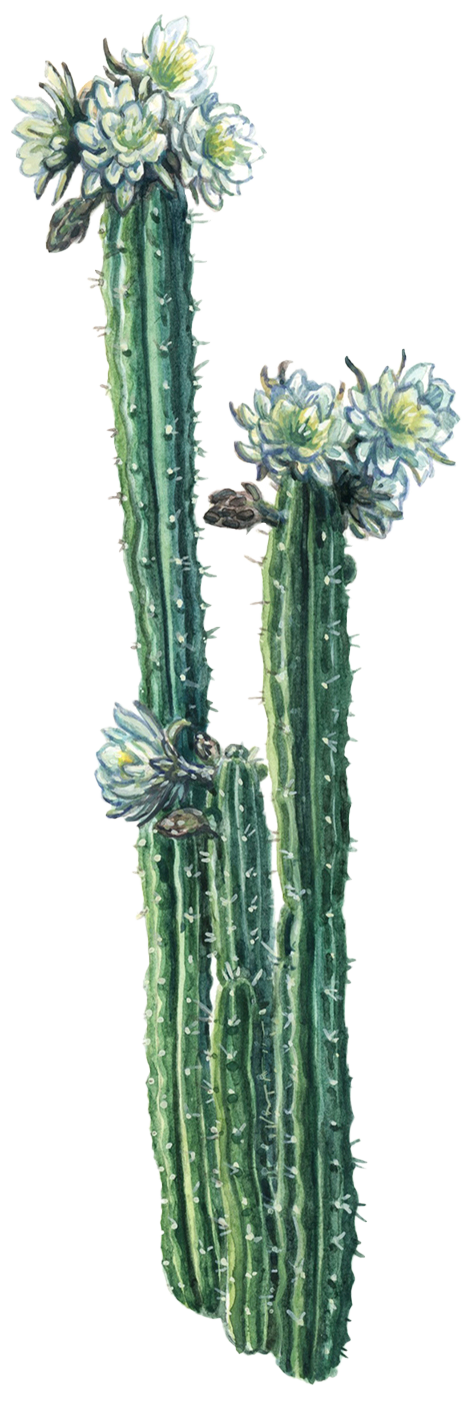

Peruvian Torch:
Echinopsis Peruviana
For the 3000 years, the good people of… wait a minute… Peru have used Peruvian Torch as a religious sacrament, a medicine for the treatment of wounds, and believe it or not, a remedy for hair loss. Imagine tripping so hard your hair came back. That’s some potent shit.
Indeed, Peruvian Torch is rumored to be ten times more powerful than any of its columnar cactus cousins. P.T. looks a hell of a lot like Bolivian Torch, but you can’t mistake it because, unlike Bolivian Torch (which grows in Bolivia), Peruvian Torch grows at 3000 meters above sea level on the western side of the Andes. Also, Peruvian Torch has shorter spines than its Bolivian cousin and produces an edible, apple-like fruit! It actually looks more like dragon fruit than an apple, but who cares? We’re here to talk about getting fuuuuuucked uuuuuup.
Unlike the other psychedelic cacti on this list, Peruvian Torch does not get you high. What it does is place you on the back of an enormous green dragon that whisks around the Andes at the speed of sound. I didn’t make that up—that’s how the people of Peru have been describing the experience for thousands of years: a bat-shit-crazy dragon ride. When it comes to mescaline potency, there’s a lot of variability between cacti species and even cacti coming from the same species (again, not all cacti are created equal), but Peruvian Torch is pretty consistent and won’t let you down.
Unlike happy-go-lucky San Pedro, Peruvian Torch can be intensely emotional, and you might find yourself in the foetal position processing past traumas (like that thing that happened Christmas that time). Google ‘Peruvian Shaman for Hire’ before cooking this one up.

Cardon Grande:
Echinopsis Terscheckii
Cardon Grande, also known as Argentine Saguaro, is the largest cactus on our list and the one you’re least likely to tangle with because it’s just too big and prickly. Honestly, it’s more of an enormous tree than a plant, and getting it into your kitchen would involve removing a wall.
Native to South America (flourishing predominantly in the north-western provinces of Argentina), Cardon Grande can grow to over twenty-five-feet tall and has branches as thick as a thick man’s waist. It’s a columnar plant that can feature between eight to fourteen ribs, with close-set areoles containing many, many long yellow spines. It produces white, nocturnal, funnel-shaped flowers, and, again, it’s fucking massive.
Cardon Grande trip reports are scarce side and subject to debate (is the psychoactive content mescaline or some other compound?). Overall, though, it sounds pretty intense, with unsettling visuals and a speedy feeling that leaves you almost grinding your teeth.
One psychonaut on Reddit had this to say: ‘I felt really speedy and needed to relax, so I laid down and closed my eyes and started getting visuals, which were mostly swirling green and red clouds of smoke that continually coalesced into the faces of demons, all grinning at me as if to say, “Well, well, well. How did you find yourself here?” After that, I decided to keep my eyes open.’ He then chose to watch the 1986 goofball comedy The Three Amigos and was reduced to tears no less than six times. Not tears of laughter—tears of sorrow. Other people have reported feeling pretty good on Cardon Grande, but it does sound like a bit of a dice roll, doesn’t it?

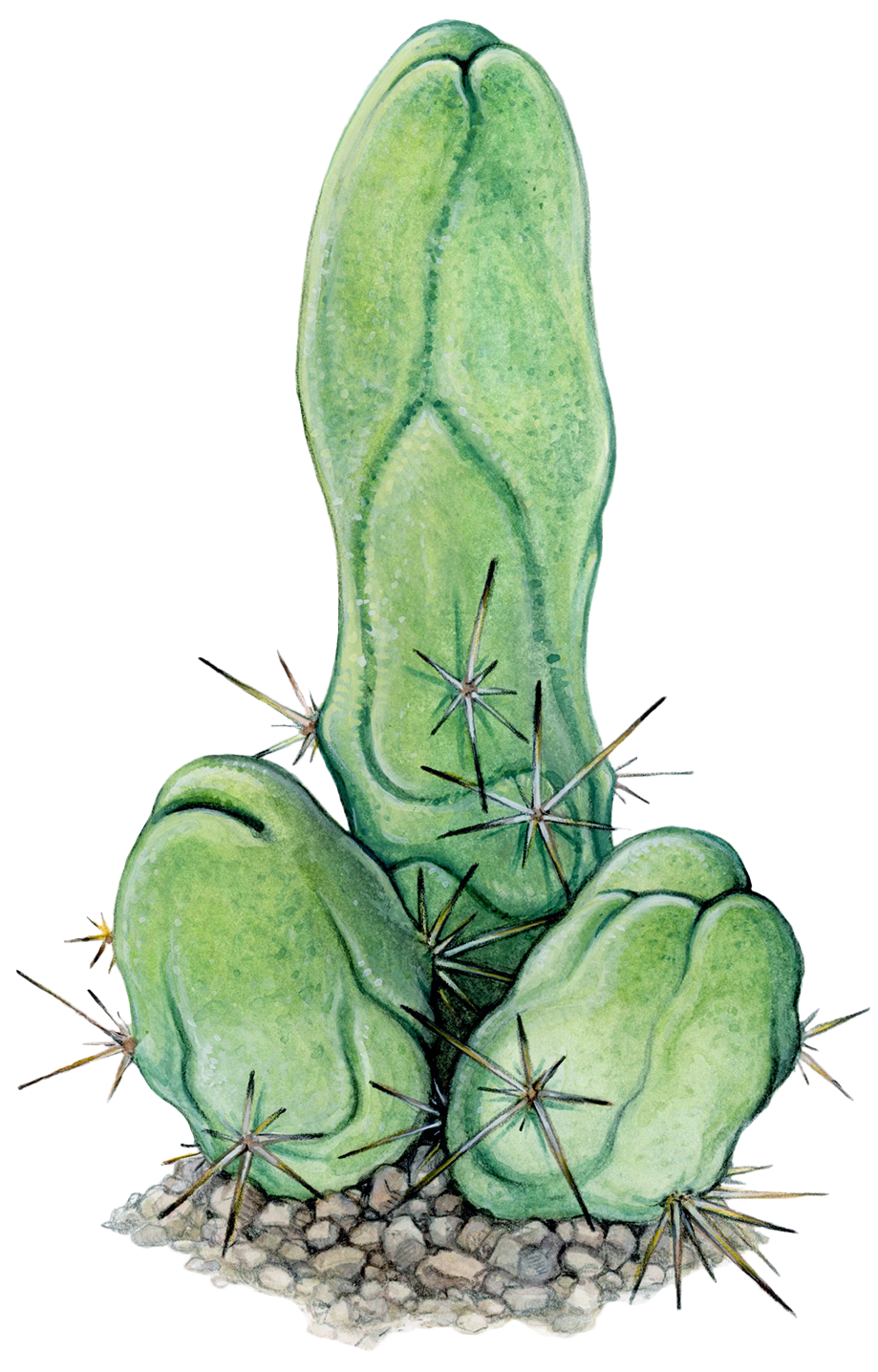

The Penis Cactus:
Trichocereus Bridgesii Monstrose
Let’s try to get through this last one on our list without being juvenile (cough). Also known as the San Pedro Penis or the Pornographic Cactus, the Penis Cactus is a small, mutated form of Bolivian Torch that just so happens to look like a big green cock. It comes in two forms—short and long (grow up)—, and it grows quite fast (grow up): slower than speedy San Pedro, but way faster than Peyote (honestly, though, they’re all sprouting at a snail’s pace).
Penis Cactus can be found in most nurseries around the world. In fact, you’ve probably seen one at your local garden center and thought, ‘Gracious, that looks almost exactly like The Incredible Hulk’s wang.’ The Penis Cactus is also known as the Frauenglück, which is German for ‘Woman’s Luck’ (really) and grows in clustered groups of four or less. Topping out at forty to sixty-centimeters high, the Penis Cactus features just a few areoles at its base, with honey-colored spines, and it’s generally cylindrical with just the hint of ribs showing through its considerable and inviting girth (grow up).
The Penis Cactus is best taken as tea. You’ll only require a chunk the size of a golf ball, and you’ll need to dice it up, pop it in a zip-lock bag, freeze it, thaw it, freeze again, then boil it, strain it, and slowly reduce what’s left. That’s your tea—your gross, brown, almost undrinkable tea. A Penis Cactus high is profoundly euphoric. You will experience some supernaturally horrible nausea, to begin with, but once that has passed, you’ll feel like you’ve been scooped up and coddled by Mother Earth herself.
So, there you have it, the wonderful world of psychedelic cacti that we definitely do not recommend you hunt down, prepare, and ingest. Good luck!















